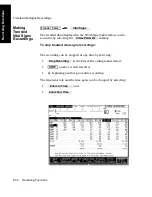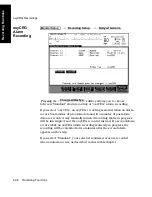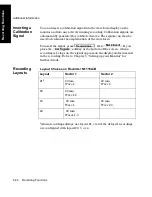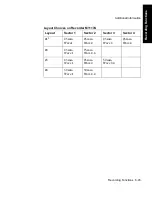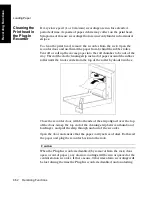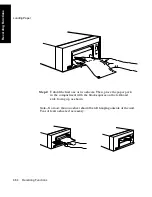
Additional Information
6-44 Recording Functions
Re
c
o
rd
ing
Func
tions
Inserting a
Calibration
Signal
You can insert a calibration signal into the waveform display on the
monitor and into any actively running recording. Calibration signals are
automatically generated for calibrated waves. The signals can then be
used to determine the amplification of the waveform.
To insert the signal, press
, then
. If you
press the
softkey at the bottom of the screen, when a
recording is being run, the signal appears on the display and is inserted
in the recording. Refer to Chapter 3, “Setting up your Monitor” for
further details.
Recording
Layouts
Layout Choices on Recorder M1116A/B
1
Alarm recordings always use layout #1, even if the delayed recordings
are configured with layout #2, 3, or 4.
Trends/Calcs
Mark Event
Cal Signals
Layout
Sector 1
Sector 2
#1
1
20 mm
Wave 1
20 mm
Wave 2
#2
40 mm
Wave 1,2
#3
20 mm
Wave 1
20 mm
Wave 2,3;
#4
40 mm
Waves 1-3
Summary of Contents for M1165
Page 12: ...Responsibility of the Manufacturer xii ...
Page 62: ...Using an ITE Display 1 40 The CMS and V24 and V26 Patient Monitors ...
Page 74: ...Attaching the Patient 2 12 Getting Started Getting Started ...
Page 172: ...Alarm Setup 5 16 Alarm Functions Alarm Functions ...
Page 228: ...Loading Paper 6 56 Recording Functions ...
Page 236: ...Admitting a Patient 7 8 Admit Discharge End Case Admit Discharge End Case OR Mode ...
Page 238: ...Admitting a Patient 7 10 Admit Discharge End Case Admit Discharge End Case endcase tif ...
Page 274: ...Drug Calculator 8 36 Trends and Calculations Trends and Calculations ...
Page 299: ...Data Transfer Module Data Transfer 10 3 Data Transfer M1235A CTS DTM CMS CMS V24 V26 ...
Page 388: ...Performance Assurance Checks 13 22 Maintenance Maintenance ...



